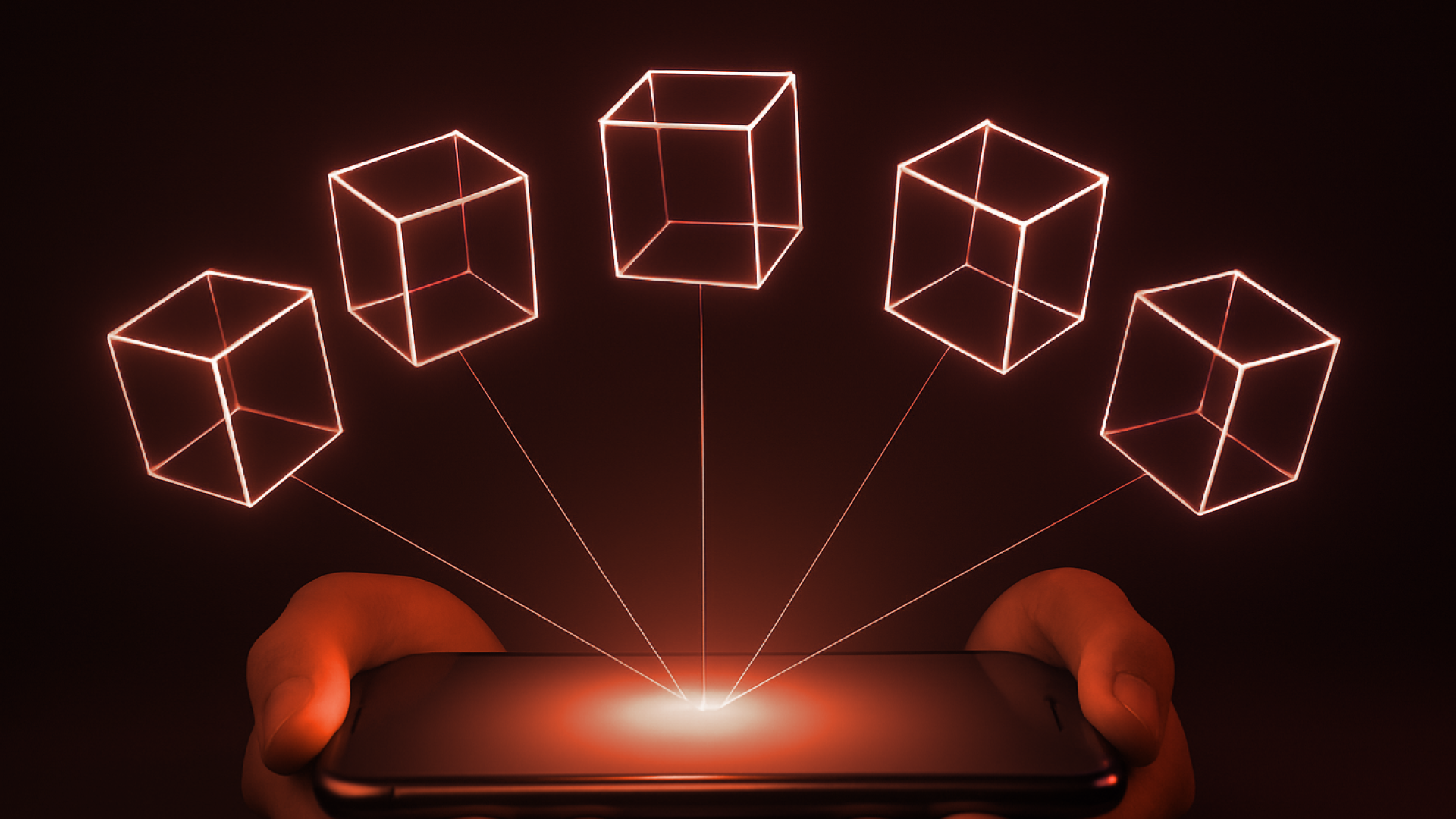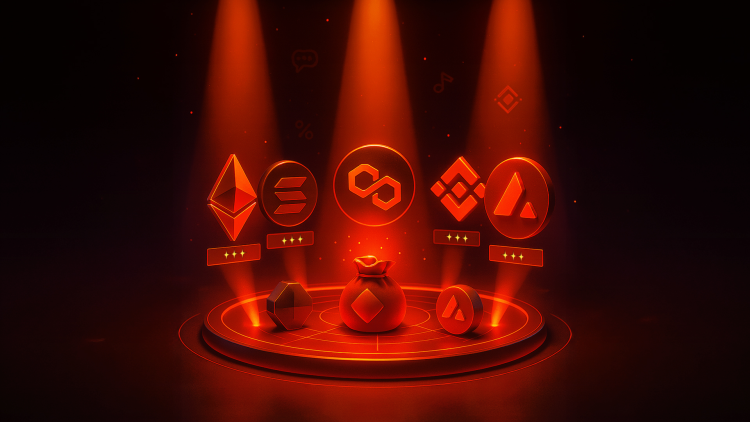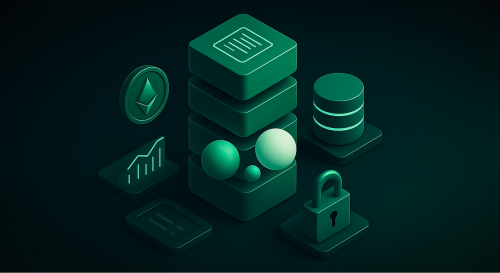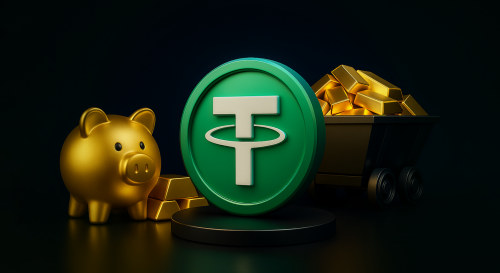The Web3 landscape in 2025 will be more dynamic than ever, and the world of decentralized applications (dApps) is booming. They are moving beyond niche communities into mainstream adoption.
Whether you’re building a gaming platform, a decentralized physical infrastructure (DePIN) project, or a consumer-facing dApp, selecting the right blockchain can be a daunting task and is crucial for success.
With an expanding array of high-performance networks, such as Solana, Ethereum Layer 2 solutions, NEAR, and Sui, developers face a difficult choice.
How do you navigate this maze?
This article will walk you through this labyrinth and steer you in the right direction.
By comparing key blockchains based on speed, fees, decentralization, and scalability, we highlight the best current and emerging options for dApp development.
Read on as we guide you in selecting the most suitable blockchain for your Web3 consumer apps, and help you in this key decision-making process.
Understanding the blockchain landscape
In this rapidly evolving space, choosing the right blockchain is akin to selecting the right vehicle for your driving needs.
In the fast-moving world of Web3, not all roads are the same, and neither are the tools for navigating them.
🚘 Ethereum Layer 2s are like fuel-efficient Toyota or Hyundai hybrids—secure, reliable, and built to tackle busy routes.
🚘 Solana is your Porsche or Ferrari (Whichever floats your boat!) It’s fast, elegant, and sleek, but occasional and specialist tuning is required.
🚘 NEAR is reminiscent of a smart city commuter car, such as the Smart car — intuitive, developer-friendly, and optimized for ease and simplicity.
🚘 And Sui? It’s the Tesla — the electric newcomer with a unique engine under the hood, promising efficiency through innovative technology.
Each one offers different strengths and trade-offs. The key is knowing what kind of road you’re on — and where you’re trying to go.
This article will steer you onto the right track for your blockchain app development.

Practical considerations: How to choose the best blockchain for your dApp
There are several key decision factors to consider when selecting the right blockchain for your dApp. To make it easy for you, we have listed them below:
Transaction speed
Transaction speed is critical for high-performance dApps that require real-time interactions, such as gaming and financial dApps.
If you feel “the need for speed,” then Solana (the Ferrari or Porsche of the blockchains) leads the pack with sub-second finality. At the same time, Ethereum Layer 2 solutions offer significant improvements over Ethereum’s base layer.
Fees
Transaction costs can impact user adoption, as high transaction fees discourage users from adopting a dApp. The Ethereum layer 2s — namely, the Toyota or Hyundai fuel-efficient hybrids are probably the best options here.
These L2s, like Arbitrum and Optimism, reduce fees while maintaining Ethereum’s security. However, Solana and NEAR can consistently provide low-cost transactions.
Decentralization
When it comes to navigating rough terrain, you want something reliable, like a Toyota Land Cruiser or a Jeep Wrangler. Both are built for endurance, capable of handling unpredictable conditions with stability and strength.
Ethereum fits this mold. It’s the Land Cruiser of decentralization — battle-tested, resilient, and built on a foundation of security, integrity, and trust.
Its robust network continues to set the gold standard for decentralized infrastructure.
Nevertheless, NEAR and Sui introduce novel consensus mechanisms to balance decentralization and efficiency; therefore, depending on your requirements, they could also be considered here.
Developer ecosystem
A strong developer community is vital for innovation and ease of development. Ethereum’s vast ecosystem provides unparalleled composability and support.
Think of it like the Toyota Land Cruiser of the blockchain world — trusted, widely supported, and built to go the distance.
Just as Land Cruisers benefit from a global support network of parts and mechanics to hand, Ethereum developers enjoy a wealth of tools and community expertise at their fingertips.
It is also worth mentioning that Solana, NEAR, and Sui offer modern tooling, simplified onboarding, and sometimes offer grants to attract developers.
Security
Security is paramount for dApp development. Ethereum’s battle-tested infrastructure provides a secure environment with L2s inheriting these benefits — so the Toyota Land Cruiser wins again.
NEAR and Sui are continuing to enhance their security, although Solana has encountered occasional network disruptions. Finally, developers should remain mindful of smart contract vulnerabilities.
Scalability
Scalability is a crucial factor when choosing a blockchain for building a dApp, as it directly impacts the blockchain’s ability to handle high traffic and growth.
Blockchains like Ethereum L2 solutions and Sui currently offer efficient, scalable solutions.
Back to the robust all-terrain vehicle — the Toyota Land Cruiser!
Now the practical considerations have been covered, let’s delve into the overall dApps ecosystem.

The ecosystem of decentralized apps
The world of dApps is quickly expanding beyond the financial sector into gaming, governance, social networking, and other infrastructure. Still, they all share a common goal — to create a more open and user-centric internet experience.
To give you a bird’s eye overview, here are some of the key dApps:
Financial dApps
DeFi apps, such as decentralized exchanges and lending protocols, are good examples of financial dApps that require a secure and scalable blockchain. Popular options for these types of dApps include Ethereum and its L2 solutions.
Gaming dApps
Gaming dApps, such as play-to-earn and move-to-earn applications, require fast, low-latency processing and low fees.
Blockchains like Solana and Sui are well-suited for gaming dApps. Their fast finality and innovative architectures support seamless in-game asset transfers.
Social dApps
Social dApps, such as social media and community platforms, require scalable and user-friendly blockchains that can also prioritize censorship resistance.
NEAR and Ethereum L2 solutions are popular options that lead the way for social dApps.
Governance dApps
Governance dApps, such as decentralized autonomous organizations (DAOs), require secure, transparent, and efficient decentralized blockchains.
Ethereum-based DAOs tend to dominate here. However, NEAR is also a popular choice due to its lower costs.
You’re still with me? Then let’s go deeper into 4 of the top blockchains that tend to hog the limelight.
Solana: Speed and throughput for high-performance apps
Firstly, Solana is designed for speed, and it shows — so what is it used for?
Due to its lightning-fast transaction processing and minimal fees, it has become a popular choice for high-performance dApps, especially in DeFi, NFTs, and real-time use cases.
Solana excels in applications where speed and scale are critical, such as powering Helium’s decentralized mobile networks or enabling Phantom’s seamless wallet experience.
However, this exceptional throughput does come with trade-offs. Although blazing fast, Solana has encountered occasional network outages and is still addressing concerns regarding decentralization.
Nevertheless, Solana remains one of the top contenders and most powerful engines for creating consumer-ready, high-volume Web3 blockchain applications.
Ethereum layer 2 solutions: Scalability with security

Secondly, Ethereum Layer 2 solutions such as Optimism, Arbitrum, Base, and zkSync bring the best of both worlds for the blockchain developer — scalability and security.
Built to extend the ETH blockchain’s capabilities, these L2s reduce congestion and cut fees while simultaneously inheriting the battle-tested security of Ethereum’s mainnet.
Successful projects, from DeFi protocols to consumer-facing apps, are already proving the power of these networks.
Web3 blockchain projects, such as Uniswap and SushiSwap, have successfully utilized Ethereum Layer 2 solutions.
To get a deeper insight, check out our article on Where to Build dApps – Monolithic vs Modular Blockchains. In the meantime, here’s a brief overview of 3 Layer 2 scaling solutions that offer enhanced scalability and security.
- Optimism employs optimistic rollups, which assume transactions are valid and verify them only if challenged. This approach allows for high throughput and reduced fees while aligning closely with Ethereum’s roadmap.
- Base, developed by Coinbase, leverages optimistic rollups and the OP Stack. Its focus is on seamless onboarding for Coinbase users, and integration with the Ethereum ecosystem aims to connect millions to onchain applications.
- ZKsync takes a different approach with zero-knowledge (zk) rollups. It utilizes cryptographic proofs for off-chain transaction validation before posting to Ethereum. Although more complex to implement, this method offers superior security and faster finality than optimistic rollups, making it suitable for advanced use cases.
Each Layer 2 solution uniquely addresses Ethereum’s scalability challenges, providing developers with options based on their priorities.
Whether it’s speed, simplicity, compatibility, or advanced cryptography, they are a go-to choice for builders who want performance without sacrificing trust.
NEAR blockchain – A developer-friendly, sharded blockchain
Thirdly, the NEAR blockchain is purpose-built for developers who value simplicity and user-friendly tools.
Its strengths lie in its usability and ease of onboarding, coupled with low transaction fees and a robust sharding architecture that ensures scalability. This makes it a strong choice for AI-integrated Web3 dApps with consumer-facing applications.
NEAR ensures that dApps can scale effortlessly without compromising on performance. Its intuitive development environment is a key feature to consider when building an AI blockchain-based dApp that requires smooth onboarding experiences.
Projects such as Mintbase (NFT creation) and Sweatcoin (a move-to-earn dApp) successfully showcase how the NEAR blockchain enables engaging, high-utility Web3 apps that prioritize usability.
For developers, the potential of building with NEAR should be explored as it provides the infrastructure to grow, highlighting its potential in this evolving space.
Sui blockchain: The rising star for object-based smart contracts
Finally, the Sui blockchain has a unique architecture that sets it apart as a high-performance Layer 1 built for speed, scalability, and innovation.
Sui enables parallel transaction execution by using an object-centric data model and a Directed Acyclic Graph (DAG) structure.
This allows many transactions to be processed simultaneously instead of sequentially. Ultimately, it results in faster throughput and lower costs and is particularly beneficial for real-time applications like gaming and dynamic asset ownership.
When combined with its high-speed Mysticeti consensus and the secure, resource-efficient Move programming language, Sui provides a strong foundation for developing next-generation high-performance dApps.
Developed by Mysten Labs, Sui is a high-performance Layer 1 blockchain gaining traction as a developer-friendly alternative to Solana, particularly among builders focused on dynamic user experiences and granular asset control.
With its emphasis on composability and responsiveness, Sui is quickly emerging as a go-to choice for next-generation decentralized applications. Examples like the Mysten Labs’ projects demonstrate Sui’s capabilities.
Closing thoughts
Choosing the right blockchain isn’t just a technical decision — it’s a strategic one.
The foundation you build on can shape your app’s performance, growth, and longevity. Whether optimizing for speed, scalability, security, or developer experience, aligning your choice with your long-term goals is key to future-proofing your end product.
Careful clarification and further research will determine the right choice — so which one, in a nutshell?
Here’s a quick rerun: Solana offers speed, Ethereum L2s provide composability and security, NEAR simplifies development, and Sui introduces innovative scalability. Ultimately, developers must consider their app’s future growth and ensure their chosen blockchain aligns with the planned long-term goals.
If you made it this far, you must be serious about developing or building dApps for consumers. Choosing the right blockchain is one critical step. There are many more decisions, and it can get quite overwhelming. So before we dig into dApp business models and loyalty programs, let’s take a look at how Telegram Mini-Apps can relieve some of the pressure. It’s waiting for you in the next article.



